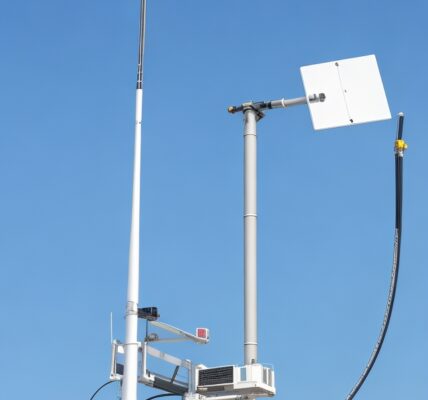refers to a computer network that is confined to a small geographic area, such as an office, building, or campus. The history of LANs can be traced back to the early 1970s, when researchers at Xerox PARC (Palo Alto Research Center) developed the Ethernet protocol for local computer networks. Here’s a brief timeline of some of the key milestones in the history of LANs:
- 1970s: Xerox PARC develops the Ethernet protocol, which uses a coaxial cable to connect computers together in a local network. This technology forms the basis of modern LANs.
- 1980s: IBM develops the Token Ring network technology, which uses a token-passing system to regulate access to the network. It was a popular alternative to Ethernet.
- 1990s: The Institute of Electrical and Electronics Engineers (IEEE) standardizes the 802.3 Ethernet protocol, which helps to drive down the cost of Ethernet and make it more widely adopted. LANs also begin to connect to the internet, enabling greater communication and collaboration between networks.
- 2000s: Wireless LANs, or WLANs, become increasingly popular, enabling users to connect to the network without needing physical cables. The development of new wireless networking technologies, such as Wi-Fi, allows for greater mobility and flexibility in network design.
- 2010s: Cloud computing becomes increasingly popular, enabling LANs to connect to remote servers and services over the internet. Virtual LANs, or VLANs, also become more widely adopted, allowing networks to be divided into multiple logical networks for greater security and flexibility.
Today, LANs continue to play a critical role in the connectivity and communication of businesses, organizations, and individuals. As technology continues to evolve, it’s likely that LANs will continue to adapt and innovate to meet the changing needs of users.
1970:-
- In the early days of LANs, the primary way to connect computers together was through physical cabling. The first LANs used coaxial cables or twisted-pair cables to connect computers together in a local area network.
- These cables were used to carry data packets between computers, and were connected to network adapters or network interface cards (NICs) that were installed in each computer. These NICs provided the physical connection between the computer and the LAN, and allowed data to be transmitted and received over the network.
- The proprietary protocols used by these early LANs were designed to work over this physical cabling infrastructure. They provided a way for data to be transmitted and received between computers on the LAN, and for individual devices to be addressed and identified on the network.
- As LAN technology evolved over time, other types of physical connections were developed, such as fiber optic cables and wireless connections. However, the underlying principles of using a physical connection to transmit data packets between devices remains the same, even as the protocols and technologies used to do so have continued to evolve.
1980s
- In the early 1980s, IBM developed the Token Ring network technology as an alternative to the popular Ethernet protocol. While Ethernet used a shared media approach, where all devices on the network could send and receive data packets on the same cable, Token Ring used a token-passing system to regulate access to the network.
- In a Token Ring network, a token is passed around the network from device to device, allowing each device to transmit data in turn. Only the device in possession of the token is allowed to transmit data, ensuring that collisions and data loss are minimized.
- Token Ring networks were typically implemented using a ring topology, where devices were connected in a circular loop using twisted-pair or fiber optic cables. Each device on the network had a unique address, and could send data packets to specific devices by including their address in the packet.
- Token Ring was a popular alternative to Ethernet in the 1980s and 1990s, especially in large corporate environments where reliability and predictability were important. However, Token Ring was more expensive and complex to implement than Ethernet, and was eventually overtaken in popularity by Ethernet and other networking technologies.
- In the 1990s, IBM developed a high-speed version of Token Ring called Token Ring High-Speed Local Area Network (TR-HSLAN), which supported data transfer rates of up to 100 Mbps. However, even this high-speed version was not able to compete with the rapidly-evolving Ethernet technology.
Overall, the development of Token Ring by IBM was a significant milestone in the history of LANs, and helped to demonstrate that there were viable alternatives to Ethernet for local area networking. While Token Ring never achieved the widespread adoption of Ethernet, it remains an important part of networking history and an interesting example of an alternative networking technology.
1990s
- In the 1990s, LANs began to connect to the internet, enabling greater communication and collaboration between networks. This was made possible by the development of the TCP/IP protocol suite, which provided a standardized way for computers to communicate over a network.
- The Institute of Electrical and Electronics Engineers (IEEE) standardized the 802.3 Ethernet protocol in the early 1990s, which helped to drive down the cost of Ethernet and make it more widely adopted. This standardized protocol ensured that Ethernet devices from different vendors could communicate with each other, and helped to make Ethernet the dominant LAN technology of the time.
- Ethernet continued to evolve in the 1990s, with new versions of the protocol offering faster speeds and better performance. For example, Fast Ethernet (802.3u) was introduced in the mid-1990s, offering data transfer rates of up to 100 Mbps, while Gigabit Ethernet (802.3z) was introduced in the late 1990s, offering data transfer rates of up to 1 Gbps.
- Along with the growth of Ethernet, other LAN technologies also emerged in the 1990s, such as FDDI (Fiber Distributed Data Interface) and ATM (Asynchronous Transfer Mode). These technologies offered different features and capabilities than Ethernet, but were generally more expensive and complex to implement.
- In the late 1990s, wireless LANs (WLANs) also began to emerge as a viable option for local area networking. These networks used radio waves to transmit data between devices, eliminating the need for physical cabling. The 802.11 standard for WLANs was introduced in 1997, and has since evolved to support faster data transfer rates and greater range.
Overall, the 1990s were a period of significant growth and evolution for LAN technology, as Ethernet became the dominant LAN protocol and other technologies emerged to offer different capabilities and features. The connection of LANs to the internet also enabled greater communication and collaboration between networks, setting the stage for the modern era of interconnected computing.
2000s
- In the 2000s, wireless LANs (WLANs) became increasingly popular, as they allowed users to connect to the network without needing physical cables. This enabled greater mobility and flexibility in network design, as devices could be moved around without the need for physical reconfiguration.
- Wi-Fi, a wireless networking technology based on the 802.11 standard, emerged as the dominant WLAN technology in the 2000s. Wi-Fi offered faster speeds and greater range than previous wireless technologies, making it suitable for use in both home and business environments.
- The development of Wi-Fi led to the growth of the mobile computing industry in the 2000s, as laptops and other portable devices could be connected to wireless networks from anywhere within range. This enabled users to work and communicate on the go, without needing to be tied to a physical network connection.
- Along with the growth of wireless networking, Ethernet continued to evolve in the 2000s, with new standards offering faster speeds and better performance. For example, 10 Gigabit Ethernet (10GBASE-T) was introduced in the mid-2000s, offering data transfer rates of up to 10 Gbps over copper cabling.
- In the 2000s, LANs also began to support more advanced network services, such as Quality of Service (QoS) and virtual LANs (VLANs). QoS allowed network administrators to prioritize traffic based on its importance, while VLANs allowed networks to be segmented into multiple logical networks, each with its own set of policies and rules.
Overall, the 2000s were a period of significant growth and evolution for LAN technology, as wireless networking became increasingly popular and Ethernet continued to evolve to meet the needs of modern networks. The development of new network services also enabled greater flexibility and control over network traffic, setting the stage for the advanced networking capabilities of the present day.
2010s
- In the 2010s, cloud computing became increasingly popular, as organizations began to move their IT infrastructure and services to remote servers and data centers. This enabled LANs to connect to remote servers and services over the internet, giving users access to a wide range of resources and applications from anywhere with an internet connection.
- The rise of cloud computing also led to the development of new networking technologies, such as virtual private networks (VPNs) and software-defined networking (SDN). VPNs allowed organizations to create secure connections between LANs and remote servers, while SDN enabled greater control and programmability over network traffic and resources.
- In the 2010s, virtual LANs (VLANs) also became more widely adopted, allowing networks to be divided into multiple logical networks for greater security and flexibility. VLANs enabled network administrators to segment the network into different zones or areas, each with its own set of policies and rules.
- Along with the rise of cloud computing and virtualization, Ethernet continued to evolve in the 2010s, with new standards offering even faster speeds and higher performance. For example, 40 Gigabit Ethernet (40GBASE-T) and 100 Gigabit Ethernet (100GBASE-T) were introduced in the early 2010s, offering data transfer rates of up to 100 Gbps over copper cabling.
- In the 2010s, LANs also began to support new technologies such as Power over Ethernet (PoE), which allowed devices such as wireless access points and IP phones to be powered over the Ethernet cable, eliminating the need for separate power sources.
Overall, the 2010s were a period of significant growth and innovation for LAN technology, as cloud computing and virtualization enabled greater connectivity and flexibility, while new networking technologies and standards continued to push the boundaries of what was possible with Ethernet and other LAN technologies.


